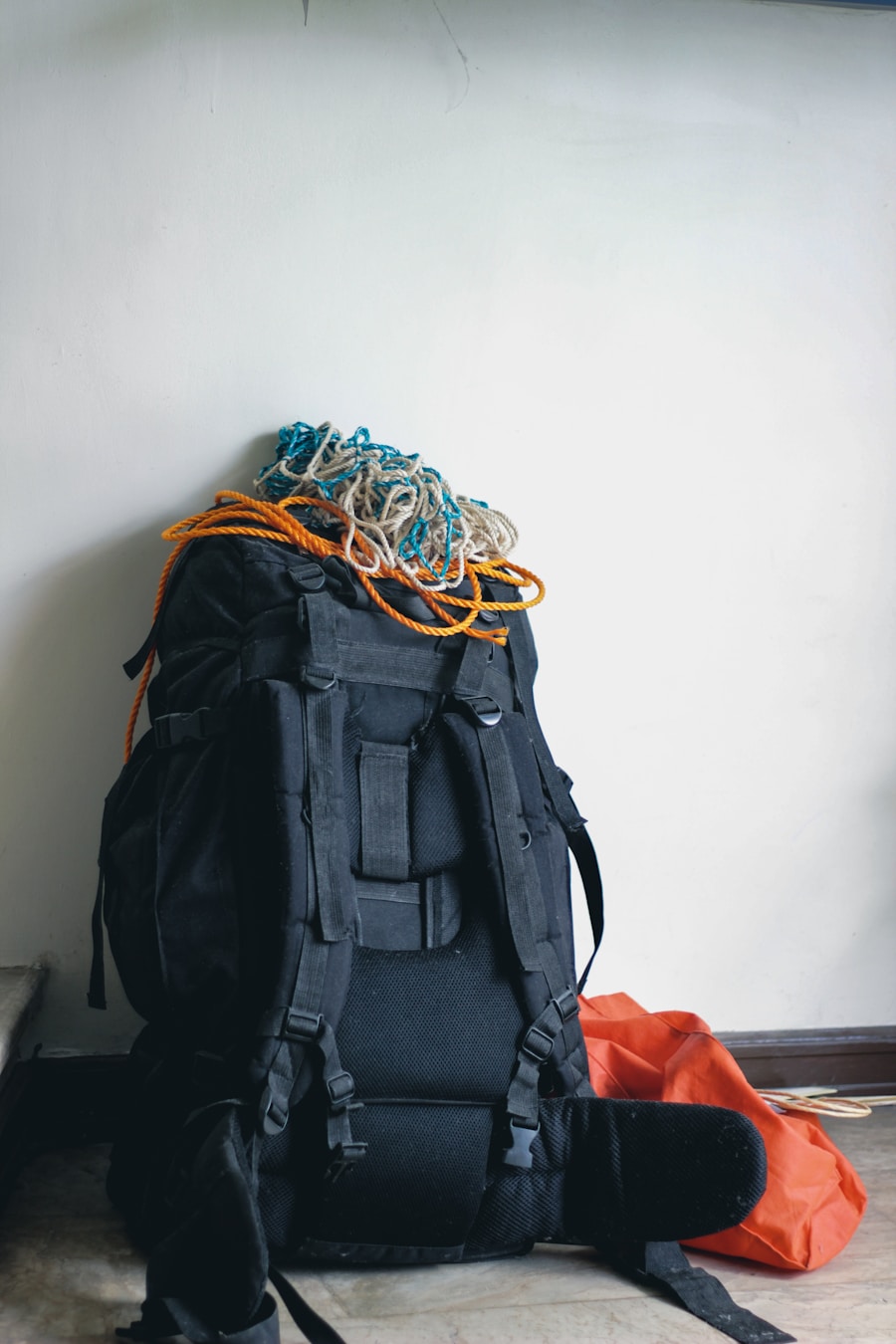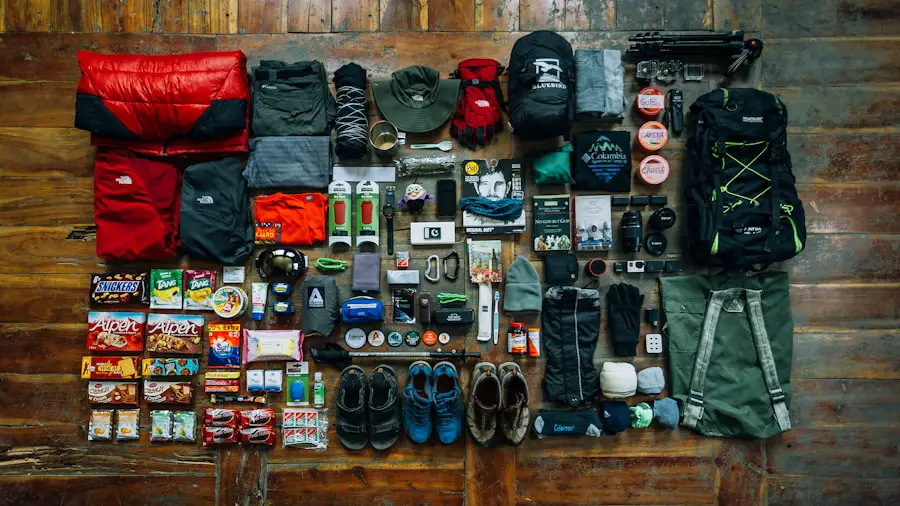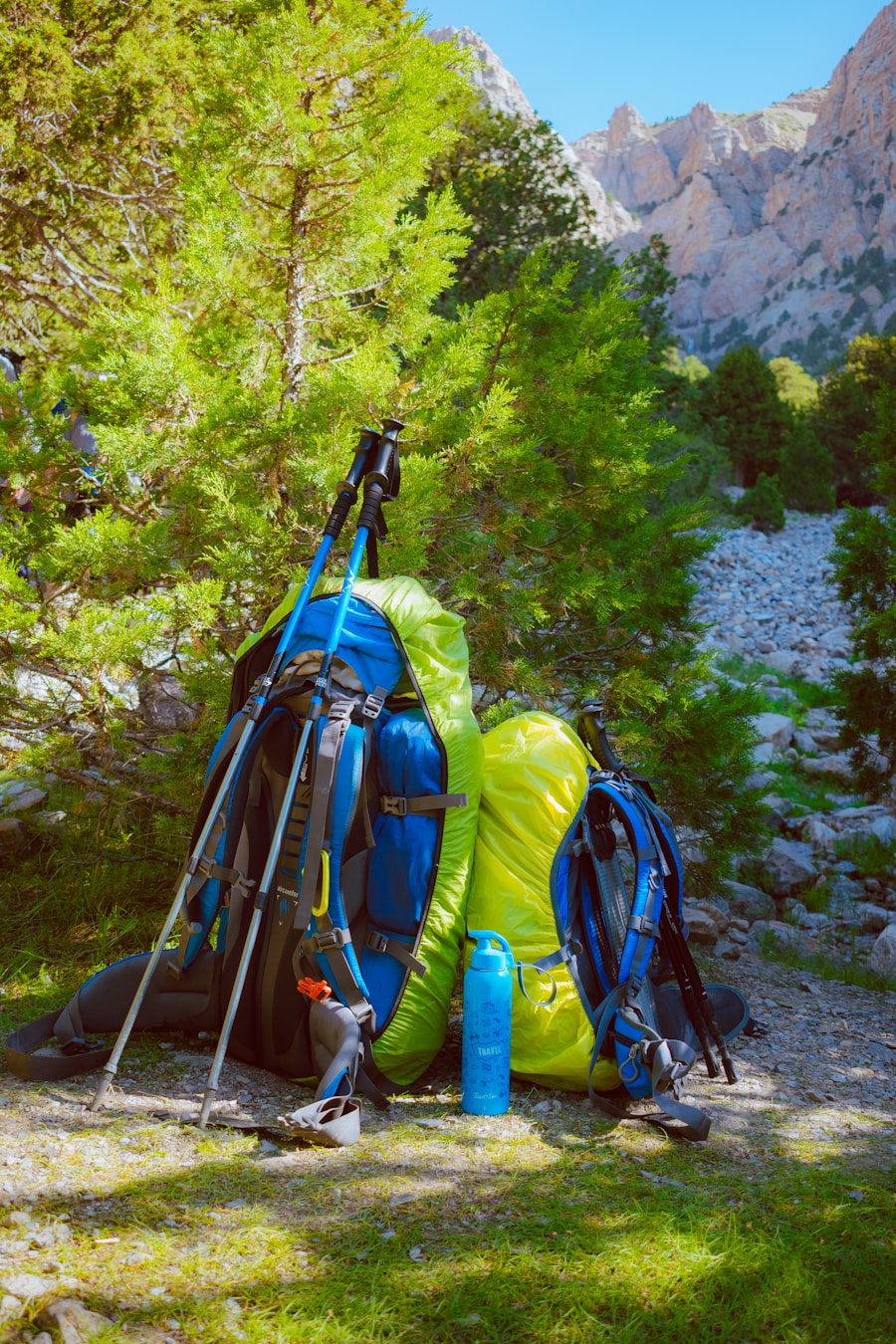When venturing into the great outdoors, the choice of clothing and footwear is paramount to ensure comfort, protection, and adaptability to changing weather conditions. The layering system is a fundamental principle in outdoor clothing, consisting of three main layers: the base layer, the insulating layer, and the outer layer. The base layer, typically made from moisture-wicking materials such as merino wool or synthetic fabrics, is designed to keep sweat away from the skin.
This is crucial during physical activities, as it helps regulate body temperature and prevents chilling. The insulating layer, often composed of fleece or down, traps body heat and provides warmth in cooler conditions. Finally, the outer layer, usually a waterproof and windproof shell, protects against environmental elements like rain, snow, and wind.
Footwear is equally critical in outdoor activities. The right pair of hiking boots or shoes can make a significant difference in comfort and performance. Hiking boots should provide adequate ankle support, especially on uneven terrain, and feature a durable sole with good traction to prevent slips and falls.
Waterproof options are beneficial for wet conditions, while breathable materials can enhance comfort during warmer weather. Additionally, wearing moisture-wicking socks can help prevent blisters and keep feet dry. It’s essential to break in new footwear before embarking on long hikes to avoid discomfort and potential injuries.
Key Takeaways
- Choose moisture-wicking and breathable clothing for outdoor activities
- Invest in high-quality, waterproof footwear for added comfort and protection
- Always carry a map, compass, or GPS device for navigation
- Pack a whistle, flashlight, and first aid kit for safety
- Stay hydrated and fuel your body with nutritious snacks on the go
- Bring a lightweight and weatherproof shelter for overnight stays
- Include a sleeping bag and sleeping pad for added comfort
- Pack essential first aid items such as bandages, antiseptic wipes, and pain relievers
- Carry personal care items like sunscreen, insect repellent, and hand sanitizer
- Bring multi-purpose tools, duct tape, and a fire starter for emergencies
- Pack extra batteries, a multi-tool, and a portable phone charger
- Include emergency supplies like a space blanket, signaling mirror, and whistle
Navigation and Safety
Navigating through unfamiliar terrain requires a solid understanding of navigation tools and techniques. A topographic map is an invaluable resource for outdoor enthusiasts, providing detailed information about the landscape, including elevation changes, water sources, and trails. Learning how to read a topographic map is essential; it involves understanding contour lines, symbols, and scales.
Complementing a map with a compass allows for precise navigation. While GPS devices and smartphone applications have become popular for navigation, they can be unreliable in remote areas due to lack of signal or battery life. Therefore, traditional navigation skills remain crucial for safety.
Safety in the wilderness extends beyond navigation; it encompasses awareness of potential hazards and preparedness for emergencies. Understanding the local wildlife is vital; for instance, knowing how to react when encountering bears or snakes can prevent dangerous situations. Additionally, familiarizing oneself with the terrain can help identify risks such as unstable rocks or swift water currents.
Carrying a whistle can be an effective way to signal for help if lost or injured. Moreover, informing someone about your planned route and expected return time is a critical safety measure that ensures someone will know to look for you if you do not return as scheduled.
Hydration and Nutrition

Staying hydrated is one of the most critical aspects of outdoor activities. The human body loses fluids through sweat and respiration, especially during strenuous activities like hiking or climbing. Carrying an adequate supply of water is essential; a general guideline is to drink about half a liter of water per hour during moderate activity in moderate temperatures.
Water purification methods such as filters, chemical tablets, or UV light devices are important for ensuring safe drinking water from natural sources like rivers or lakes. It’s also wise to carry a collapsible water container for easy transport when refilling. Nutrition plays an equally vital role in maintaining energy levels during outdoor excursions. High-energy foods that are lightweight and easy to pack are ideal for hiking trips. Trail mix, energy bars, jerky, and dried fruits provide quick sources of energy without adding excessive weight to a backpack.
For longer trips, planning meals that are easy to prepare yet nutritious is essential; dehydrated meals are popular among backpackers for their convenience and lightweight nature. It’s important to balance carbohydrates, proteins, and fats in your diet to sustain energy levels throughout the day. Additionally, snacks should be readily accessible to maintain energy without having to stop for a full meal.
Shelter and Sleeping
| Category | Metric | Value |
|---|---|---|
| Shelter and Sleeping | Homeless Population | 567,715 |
| Shelter and Sleeping | Emergency Shelter Beds | 276,014 |
| Shelter and Sleeping | Transitional Housing Beds | 111,592 |
| Shelter and Sleeping | Unsheltered Population | 211,101 |
Choosing the right shelter is crucial for ensuring comfort and protection from the elements during outdoor adventures.
Tents come in various styles and sizes; lightweight backpacking tents are designed for portability while providing adequate protection from rain and wind. When selecting a tent, consider factors such as weather conditions, terrain type, and the number of occupants.A three-season tent is suitable for most conditions encountered in spring, summer, and fall, while a four-season tent is designed to withstand harsher winter conditions. Sleeping systems also play a significant role in outdoor comfort. A quality sleeping bag rated for the expected temperatures will help ensure warmth during chilly nights.
Sleeping pads provide insulation from the cold ground while adding cushioning for a more comfortable sleep experience. When setting up camp, choosing a flat area away from potential hazards like falling branches or flooding is essential. Additionally, practicing Leave No Trace principles by selecting established campsites helps minimize environmental impact while ensuring safety.
First Aid Kit
A well-stocked first aid kit is an indispensable component of any outdoor adventure. It should contain essential items such as adhesive bandages in various sizes, antiseptic wipes or ointments for cleaning wounds, gauze pads for larger injuries, and medical tape for securing dressings. Additionally, including pain relievers like ibuprofen or acetaminophen can help manage discomfort from minor injuries or ailments.
It’s also wise to carry specific medications if you have known allergies or chronic conditions. Beyond basic supplies, knowledge of first aid procedures is equally important. Familiarizing oneself with how to treat common outdoor injuries such as sprains, fractures, or insect bites can make a significant difference in emergency situations.
For instance, knowing how to properly immobilize a sprained ankle can prevent further injury until professional help can be reached. Taking a wilderness first aid course can provide valuable skills and confidence in handling medical emergencies in remote settings.
Personal Care and Hygiene

Maintaining personal care and hygiene while outdoors is essential not only for comfort but also for health reasons. Basic hygiene practices such as handwashing can prevent illness during extended trips. Carrying biodegradable soap and hand sanitizer ensures cleanliness when water sources are limited.
Additionally, using a small trowel for digging a cathole when nature calls helps minimize environmental impact while maintaining personal hygiene. Oral hygiene should not be overlooked either; packing a travel toothbrush and toothpaste can help maintain dental health during longer excursions. Insect repellent is another important item to include in your personal care kit; it protects against bites that can lead to discomfort or disease transmission.
Sunscreen is equally vital; applying it regularly helps prevent sunburns that can ruin an outdoor experience. Choosing products that are environmentally friendly ensures that your personal care routine does not harm the natural surroundings.
Tools and Accessories
Having the right tools and accessories can significantly enhance the outdoor experience by providing solutions to common challenges encountered on adventures. A multi-tool or knife is one of the most versatile items you can carry; it can be used for food preparation, gear repair, or even first aid applications in emergencies. When selecting a multi-tool, consider features such as blade quality, ease of use, and additional tools like screwdrivers or scissors that may be beneficial.
Other useful accessories include headlamps or flashlights for navigating after dark; these should be lightweight with long battery life to ensure reliability during nighttime activities. A portable camp stove allows for cooking meals efficiently while minimizing fire hazards in sensitive areas. Additionally, packing a lightweight tarp can provide extra shelter from rain or serve as a ground cover when setting up camp.
Each tool should be chosen based on its utility and weight to ensure that your pack remains manageable without sacrificing essential functions.
Emergency Supplies
In any outdoor adventure, being prepared for emergencies is crucial for safety and survival. A whistle serves as an effective signaling device if you become lost or need assistance; its sound carries much farther than the human voice. A compact emergency blanket can provide warmth in unexpected situations where temperatures drop suddenly at night or during adverse weather conditions.
Fire-starting supplies are another essential component of emergency preparedness; waterproof matches or a reliable fire starter can be lifesaving in cold conditions where warmth is necessary for survival. Additionally, carrying an emergency bivvy sack provides temporary shelter if you find yourself stranded overnight without access to your main gear. It’s also wise to include a small supply of food rations specifically designed for emergencies; these high-calorie options can sustain you until you reach safety or can signal for help effectively.
By equipping yourself with the right clothing and footwear, navigation tools, hydration solutions, shelter options, first aid supplies, personal care items, tools and accessories, as well as emergency supplies, you create a comprehensive strategy that enhances your outdoor experience while prioritizing safety and preparedness in any situation you may encounter.
When preparing for a hiking trip, it’s important to consider what to put in your backpack to ensure a comfortable and enjoyable experience. Along with essentials like water, snacks, and a first aid kit, it’s also crucial to pack the right clothing. Traveler pants are a great option for hiking as they are versatile, durable, and provide ample storage for small items. For those who enjoy birdwatching or taking in scenic views, compact binoculars are a handy addition to your backpack. And to stay connected and powered up during your adventure, portable phone chargers are a must-have. Check out this article for more information on the best traveler pants for hiking.
FAQs
What should I put in my hiking backpack?
When packing your hiking backpack, it’s important to consider the essentials such as water, food, navigation tools, first aid kit, extra clothing, and emergency supplies.
How much water should I carry in my hiking backpack?
It’s recommended to carry at least 2 liters of water per person for a day hike. In hot or dry conditions, you may need to carry more.
What kind of food should I pack for a hiking trip?
Pack lightweight, high-energy snacks such as trail mix, energy bars, and dried fruits. For longer hikes, consider packing sandwiches, wraps, or other non-perishable meals.
What navigation tools should I bring in my hiking backpack?
Essential navigation tools include a map of the area, a compass, and a GPS device. It’s important to be able to navigate your way on the trail.
What should I include in my first aid kit for hiking?
A basic first aid kit for hiking should include bandages, adhesive tape, antiseptic wipes, pain relievers, blister treatment, and any personal medications.
What extra clothing should I pack in my hiking backpack?
Pack extra clothing appropriate for the weather conditions, including a waterproof jacket, extra socks, and a hat. It’s important to be prepared for changes in weather.
What emergency supplies should I carry in my hiking backpack?
Emergency supplies may include a whistle, a headlamp or flashlight, a fire starter, a multi-tool, and a space blanket. These items can be crucial in unexpected situations.
